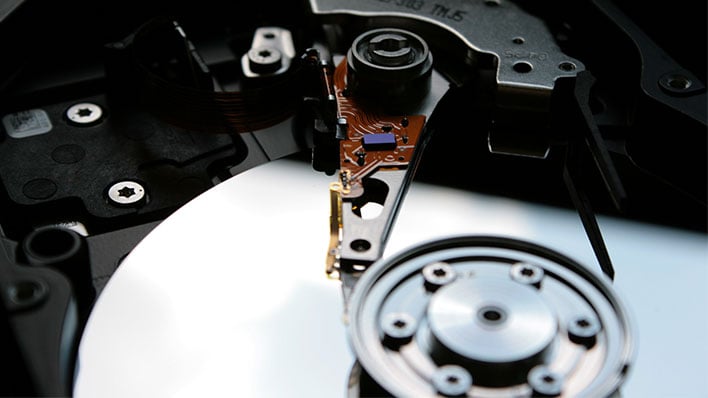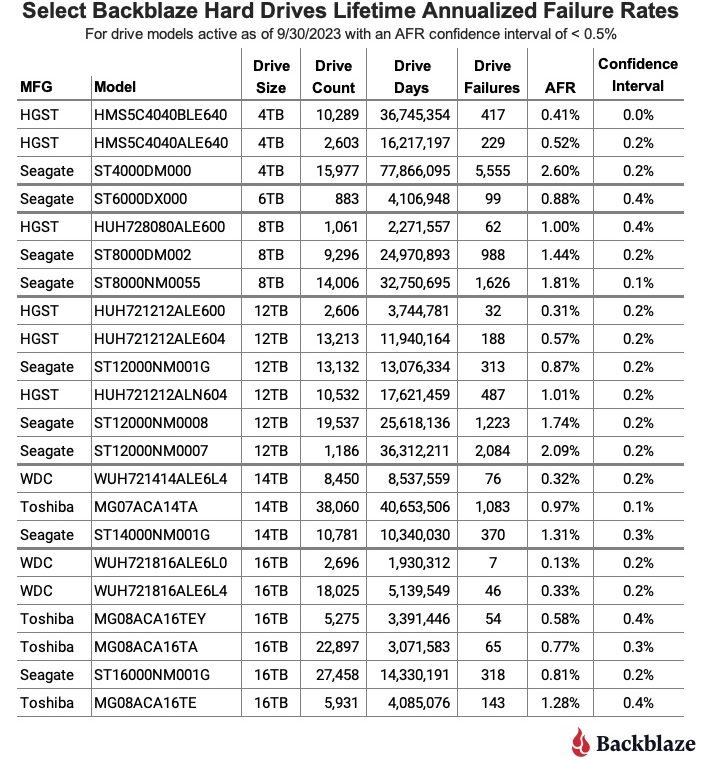Storage Reliability Report Yields Surprising Results As Summer Temps Hit A Record High

The mechanical hard disk drive (HDD) isn't dead even as solid state drives (SSDs) steal the limelight. That's because pricing for bulk storage still favors HDDs. But while the storage medium is far from dead, HDDs do give up the ghost, some more often than others. Which ones are the most reliable? That's a tricky question, and it's also where cloud backup firm Backblaze comes into play. It's been releasing frequent storage reliability reports for a long while now, and the latest one provides some interesting data points.
There are two things in particular that are interesting in Blackblaze's drive stats for the third quarter of 2023. One is how aging, larger capacity HDDs—8TB, 10TB, and 12TB—fared after having a rough quarter in Q2, and what impact record summer temps had on the fleet as a whole. Let's start with the former.
In Blackblaze's previous Q2 storage report, it noted a spike in the collective annual failure rate, which rose to 2.2%. The cloud backup firm suspected this was due to "overall aging of the drive fleet" and specifically surmised the aforementioned capacities were dragging down the group. But as tends to happen, stats fluctuate from one quarter to the next.
The firm's suspicions "fell flat in Q3 as nearly two-thirds of drives models experienced a decreased AFR quarter over quarter" to 1.47%. That included the 8TB, 10TB, and 12TB models. As such, it now believes that Q2's figures were an anomaly. The fluctuating data also underscores how difficult it can be to glean accurate information and predictions on drive reliability, at least from one quarter to the next.
What also stood out in the latest storage reliability report is how drives fared during a record uptick in summer temperatures.
"As anyone should in our business, Backblaze continuously monitors our systems and drives. So, it was of little surprise to us when the folks at NASA confirmed the summer of 2023 as Earth’s hottest on record. The effects of this record-breaking summer showed up in our monitoring systems in the form of drive temperature alerts," Backblaze states.
The firm points out that there can be numerous reasons why a drive in any given storage server can heat up, including failing fans in the server, other components producing heat, air flow becoming restricted for whatever reason, and so forth. Additionally, it's not unusual for the ambient temperature in a data center to rise during summer, which can lead to an increase in temperature alerts.
This is all notable because Backblaze did indeed observe a relatively small number of drives exceeding their maximum temperature thresholds as set by their respective manufacturers.
"The maximum temperature for most drives is 60°C, except for the 12TB, 14TB, and 16TB Toshiba drives which have a maximum temperature of 55°C. Of the 259,533 data drives in operation in Q3, there were 354 individual drives (0.0013%) that exceeded their maximum manufacturer temperature. Of those only two drives failed, leaving 352 drives which were still operational as of the end of Q3," Backblaze notes.
These types of fluctuations in temps can and do happen on occasion, but there is enough cause for concern that Backblaze is investigating the root cause to make sure it's ready "for the inevitability of increasingly hot summers to come."

What does it all mean? In sort, that analyzing drive failures on this scale is not easy. That said, Backblaze provided a handy chart (above) that shows which models have the lowest confidence intervals. Contrary to how that might sound, the lower the confidence interval, the more certain Backblaze is of the AFR.
"We like a confidence interval to be 0.5% or less. When the confidence interval is higher, that is not necessarily bad, it just means we either need more data or the data is somewhat inconsistent," Backblaze states.
At quick glance, most of the higher capacity drives in the above chart have low AFRs, which is good to see. Nevertheless, it's always a sound idea to have a backup routine in place no matter what storage drive you're relying on. The more backups, the better. And for especially important data, one of those backups should be offsite (in the cloud, at another family member's house, etc), just in case of a disaster like a flood or fire.
Check out the full Q3 storage report to dive into more details.

